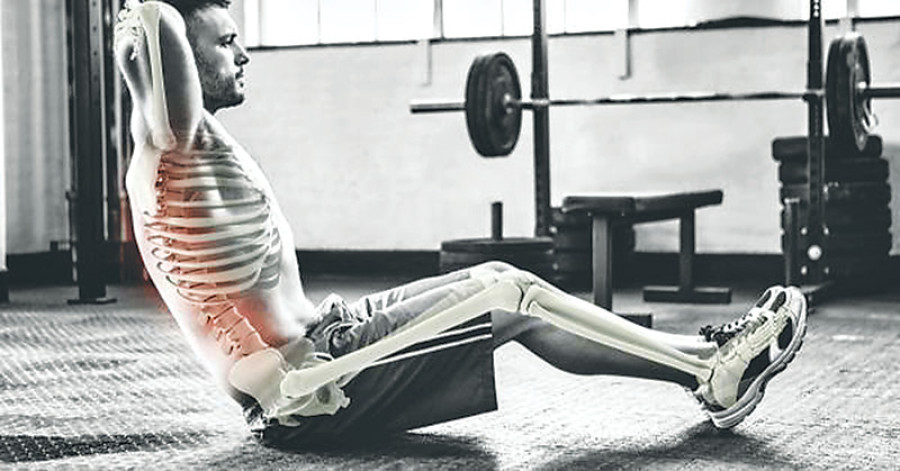Culture & Lifestyle
How our bones might Help Keep our weight in check
Our skeletons may help to keep our weight under control, according to a fascinating new study with animals.
Gretchen Reynolds
Our skeletons may help to keep our weight under control, according to a fascinating new study with animals.
The study suggests that bones could be much more intimately involved in tracking weight and controlling appetite than scientists realised. It also raises interesting questions about whether a sedentary lifestyle could cause us to pack on pounds in part by discombobulating our sensitive bones.
There is no question that our bodies like to maintain whatever weight they have sustained for any period of time. This is in large part because of our biological predilection for homeostasis, or physiological stability, which prompts our bodies to regain any weight that we lose and, in theory, lose any weight that we gain.
To achieve this stability, however, our bodies have to be able to sense how much we weigh, note when that weight changes, and respond accordingly, as if we contained an internal bathroom scale.
It has not been clear how our bodies manage this trick.
Some years ago, scientists did discover one of the likely mechanisms, which involvesleptin, a hormone released by fat cells. In broad terms, when people add fat, they produce more leptin, which then jump-starts processes in the brain that reduce appetite and should cause their bodies to drop that new weight.
But obviously this system is not perfect or no one would hold on to added pounds.
So for the new study, which was published this month in Proceedings of the National Academy of Sciences, an international group of researchers began to wonder whether there might be other processes at work.
To find out, they first gathered groups of mice and rats. They chose both species, hoping that, if any results were common to each, this might indicate that they also could occur in other mammals, including, potentially, us.
Then the scientists implanted tiny capsules into each rodent’s abdomen. Some contained weights equaling about 15 percent of each animal’s body mass. Others were empty.

In effect, some of the animals had just gained a big chunk of weight.
The scientists then left the rodents alone to deal with these added ounces as they would. And their bodies quickly went to work. Within two days, the animals containing the weighted capsules were eating less and after two weeks, had generally lost almost as much weight as the capsules contained.
When the scientists subsequently removed the weighted capsules from some of the animals, those mice and rats began eating more and soon added back those ounces. Their homeostatic weight sensors clearly were working well, in both directions.
The researchers next repeated the procedure, but in mice that had been bred to produce very little leptin. Again, the animals ate less to stabilise their weights after the capsules were implanted.
So, their bodies were not relying solely on leptin to track and respond to weight changes.
Finally, the scientists considered bones. As they knew, most animals’ skeletons readily sense when they are being stressed by such things as strenuous weight-bearing exercise and will add extra bone cells to handle that pressure.
Osteocyctes, a type of bone cell, are thought to be the cells that recognise when outside forces are affecting the bone and send out biochemical signals prompting the creation of new bone.
To see if they likewise detect and respond to changes in body weight, the scientists bred a group of mice with unnaturally low levels of osteocytes. Then they again implanted the weighted capsules.
This time, the animals did not drop that added weight. Their bodies did not seem to realise that they had become heavier, presumably because of the low levels of osteocytes, and the animals remained artificially plump.
The implication of this result is that healthy bones seem to sense changes in body mass and then somehow initiate alterations to appetite and eating that can return the body to its previous weight, says John-Olov Jansson, a neuroscientist at the University of Gothenburg who led the study.
He and his colleagues call the bones’ sensor a “gravitostat,” which is triggered by body weight bearing down on bones, a result of the inexorable pressures of gravity.
And they suspect, he says, that a similar gravitostat exists in people.
The possibility could help to explain why sitting for hours is associated with obesity, he continues. When we sit, much of our body weight is supported by cushions rather than bones, leaving our skeletons unaware of how much we actually weigh and whether that amount has changed or should change.
Of course, that theory is purely speculative at the moment, since this study involved rodents, not people. It also cannot tell us how, if our bones do keep track of our poundage, they manage that feat, or how they communicate the information to the brain and its appetite centers.
Dr Jansson and his colleagues plan more-detailed follow-up studies.
But for now, the findings may provide another plausible reason to get up from our chairs and perhaps help our bones to keep better track of our waistlines.
—©2018 The New York Times




 15.12°C Kathmandu
15.12°C Kathmandu















